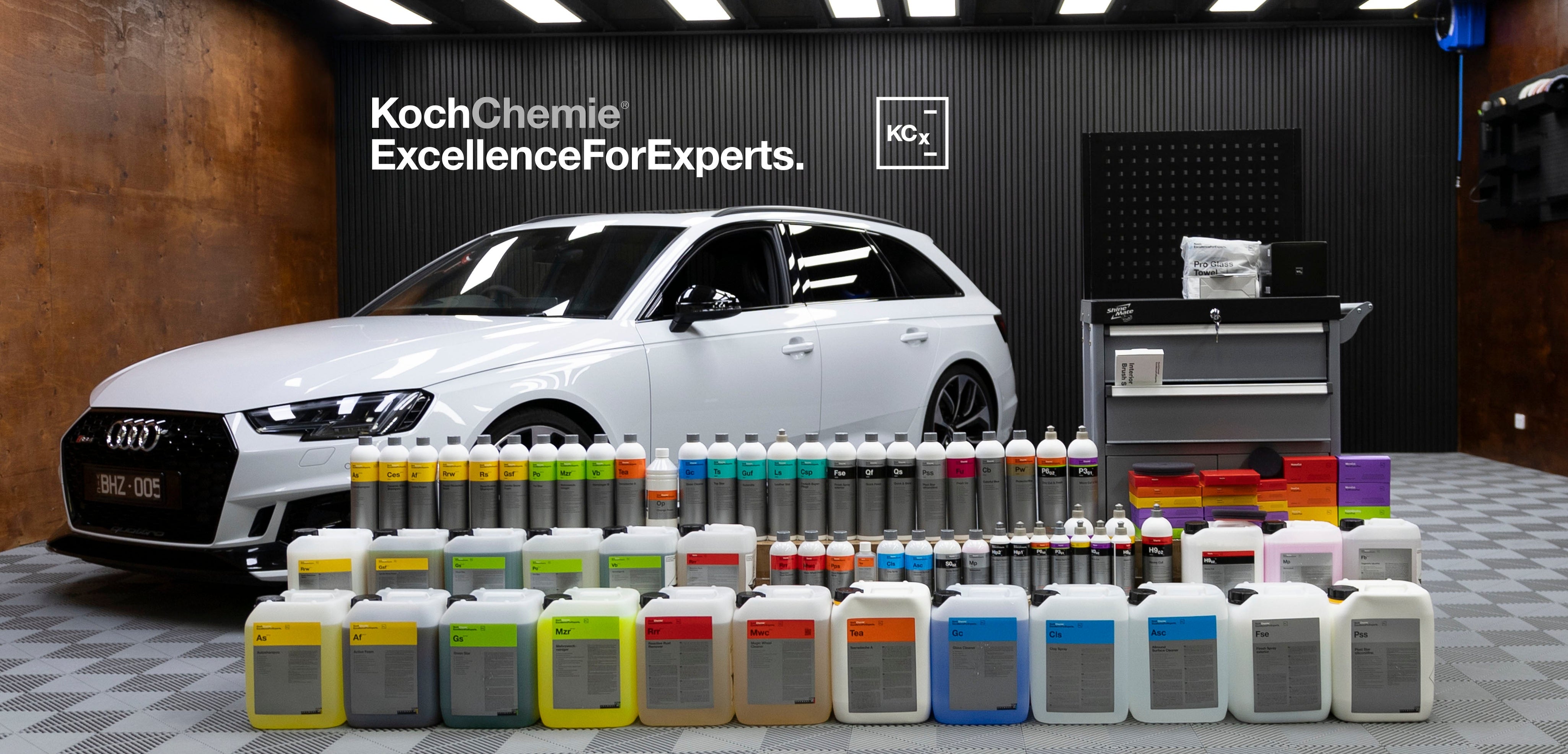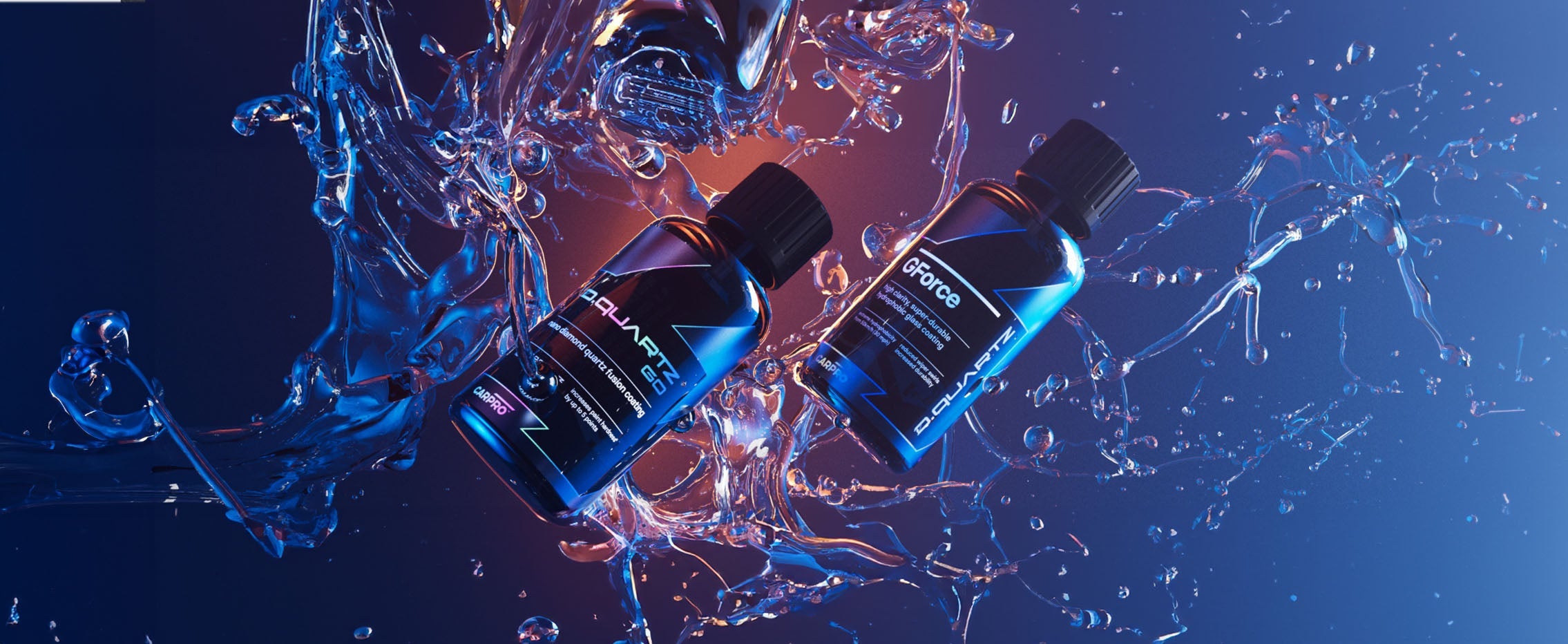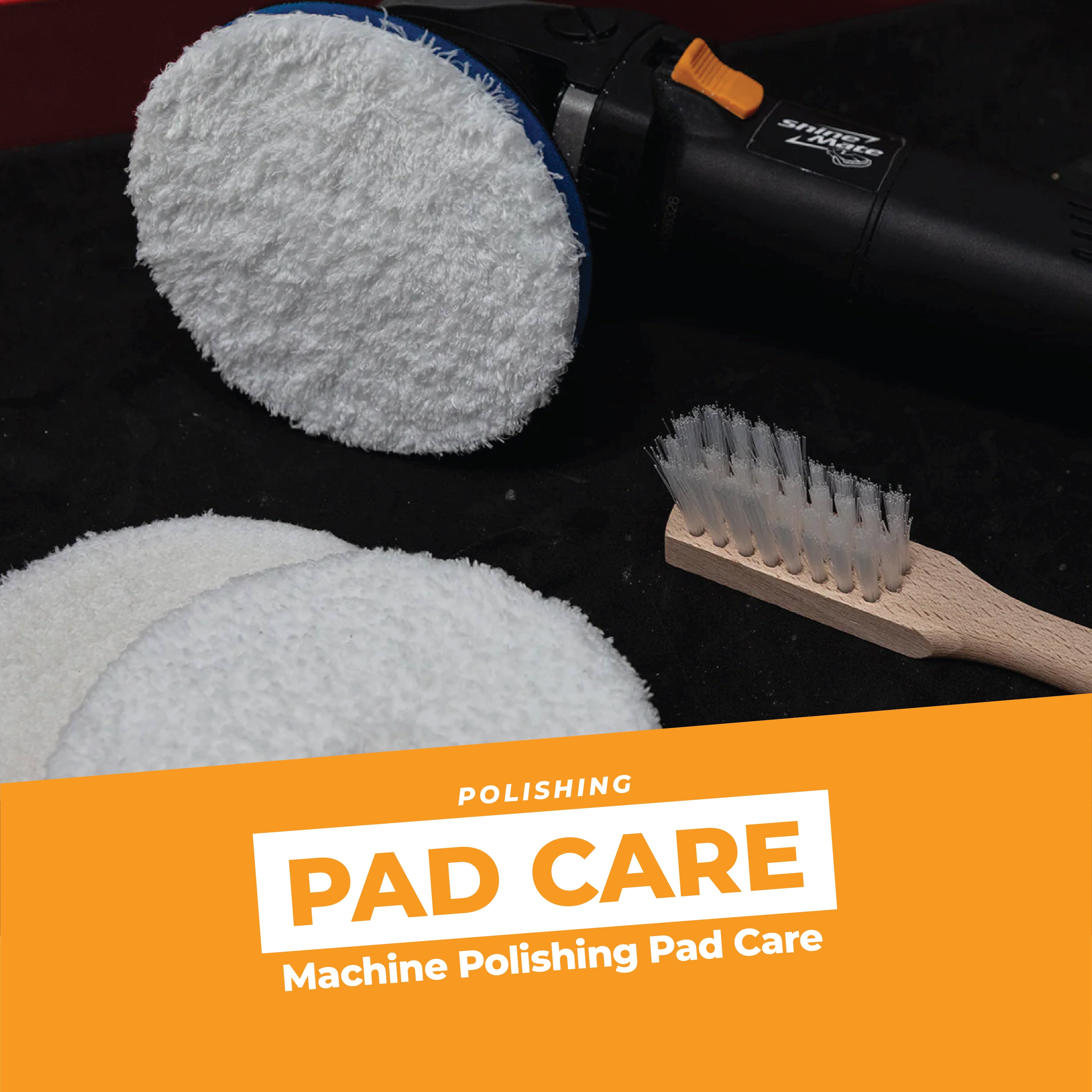What is a Ceramic Coating?
In essence a ceramic coating is a form of paint protection for just about any vehicle including cars, trucks, motorcycles, and boats. It is used to protect the paint from the harsh elements and make the maintenance, wash and upkeep of the vehicle an easier experience.
The best way to think of a ceramic coating is as a very durable, high performing car wax or sealant. Coatings actually contain silica dioxide/Quartz, the main ingredient found in glass, so it’s very hard, yet can still flex with your car's movement.
 (CarPro Cquartz 3.0 UK | CarPro Cquartz Foam Block Applicator)
(CarPro Cquartz 3.0 UK | CarPro Cquartz Foam Block Applicator)
Why Use a Ceramic Coating?
The benefits of a ceramic coating include a number of great advantages:
-
Far greater durability than a wax or sealant - it should last years on average rather than months.
-
It’s less prone to scratches due to its increased hardness and increased anti-friction finish.
-
It has great self-cleaning abilities so your vehicle tends to look cleaner for longer and it makes maintaining and washing your car a much easier process.
-
It can be more cost and time effective as you don’t need to apply it as regularly as a wax or sealant.
-
They can also be used to coat most interior and exterior trims including glass, plastics, rubbers, wheels, leather, and metal.
What are the Disadvantages of Ceramic Coatings?
-
It can be difficult for someone new to ceramic coatings to learn and understand how to apply them without the proper knowledge and guidance.
-
The initial cost of a coating can be expensive.
-
There’s a lot of bad and false, misleading information surrounding ceramic coatings.
-
To get the most out of a coating it’s vital that the vehicle’s paint and trims are thoroughly prepared before application.
-
All coatings are different so it’s important to adapt your application technique for each specific one.
-
Coatings are extremely temperature and climate sensitive so you must adapt your application method based on your environment.
How To Apply a Ceramic Coating to Your Vehicle:
Your first step should always be a thorough wash and decontamination process of the vehicle as well as polishing the paint prior to applying a ceramic coating. The better your preparation work is, the better the coating will perform, and the longer it will last. Just before applying any ceramic coating, it is important to perform an IPA wipe - an alcohol based cleaner to remove any chemical residue or polishing oils and fingerprints from the paint and trims.
Most ceramic coatings will come with the applicator blocks and cloths needed to apply it, but you’ll also need about half a dozen microfibre cloths. In general, a bead/line of the coating is dispensed across the applicator cloth, and the coating is applied to about a half-metre square area of a vehicle’s panel. Apply it in overlapping vertical and horizontal lines, wiping the coating several times in each section to ensure an even and consistent application. Usually, within a few minutes, the coating should flash, meaning that it’s bonded to the paint and is ready to be wiped down to collect the excess product.
When a coating flashes it will tend to look quite streaky and less wet, however, if you let it sit for too long it will become quite difficult to remove, and if you wipe it off before it has the chance to flash it won’t effectively bond to the surface.

How long a coating takes to flash is dependant on the specific coating itself. Some coatings flash instantly and others can take several minutes to do so. Temperature can also play a big factor in the time it takes to flash. In hotter climates coatings will flash more quickly, while in colder climates it will take longer to do so.
Once the coating has flashed you should use a microfiber cloth to gently wipe over the surface to collect the majority of the excess coating. This should be followed by a second clean microfiber cloth to buff the finish streak-free. After every couple of sections, you should turn your microfibre cloths to clean sections and once you’ve used all the sections of your cloths you should swap them out for fresh clean cloths. From that point on it’s just a matter of moving on to your next half-metre section and repeating the application, flash-time, and wipe-off around the whole vehicle.
It’s best to work using a top to bottom method around the vehicle and always ensure you are slightly overlapping your coating application sections as to not leave any areas untreated or coated.
Once you finish applying the coating to a section you should thoroughly inspect it for any high-spots (uneven parts) or streaks in the finish before you move on to the next section, as once the coating begins to cure you’ll no longer be able to remove any streaks or high-spots you may have missed. The ideal lighting for applying a coating is soft, diffused, and reflective light which will expose streaks and high-spots rather than harsh and direct lighting which will tend to flood the panel and wash away existing streaks.
What Else Should I know?
There is a large variety of ceramic coatings, many of which have been more specifically formulated to protect other vehicle trims such as glass, wheels, rubbers, plastics, and metal. Not all ceramic coatings are created equally and there is a massive difference between a quality coating and a cheap or inferior one. We make sure we stock high-quality, premium quality ceramic coatings at Waxit.
Although most ceramic coatings are available to the general public, there are many professional-only coatings reserved for professional detailer applications that over all are more difficult to apply, but tend to also be greater performing, with greater durability.
After application, a coating should be given at least 24hrs to set before the vehicle is used and at least 1 week before the vehicle is washed.
A coating should be cared for much the same way as any wax or sealant, by regularly washing the vehicle using safe washing and drying methods.
In most cases a quality ceramic that has been applied correctly should last anywhere from 12 months to several years. However, where and how the car is parked and used, as well as how well it’s maintained will play a large role in how long the coating will last.
Products such as quick detailers and spray waxes/sealants that also contain SiO2 or silica dioxide can be a great way to maintain and extend the life of the coating in the future.
Once a ceramic coating has come to the end of its life and starts to show signs of poor water behaviour, gloss levels, and protection, the vehicle should be given a thorough decontamination wash and at least a light polish to completely remove the old coating before a new one is applied.







